Structural Control In Limestone Cave Formation
Jenolan Caves Australia
Email: tedwin43@bigpond.net.au
Abstract
Australia has many significant caves developed within its limestones. Of particular interest are those in the Eastern States, where caves are generally formed within Palaeozoic rock, which has been folded and metamorphosed over the past 350 Ma. Such hardened limestone is non-porous. Fluids such as water may penetrate via more porous inter-bedded structures. Additionally; joints, faults, or porous fill may allow internal access.
A statement regarding the formation of these caves may include the following geological concepts:
- ‘Limestone caves’ result from the weathering and erosion of rock;
- For the most part,(and over considerable time), the less resistant materials in the rock are being, or have been removed;
- Development of drainage allows a lowering of the water table and so a previously submerged space may become air-filled.
Explanation as to why any cavern is specifically located within its envelope of resistant limestone may involve further and comparative observation, in order to recognise and note:
- Geological structure such as folding and textural change of sedimentary rock beds of the Limestone Unit in question (eg ‘Jenolan Caves Limestone’) ;
- The chemical nature and shape of inter-bedded materials;
- The enclosure and array of anomalous sediments housed within the caves.
Over the past 30 years a great deal of work has been put towards drawing perhaps biased yet popular conclusions from such observation. It remains conclusive that much, if not most of the sediment within these caves is autochthonous and that the cave boundaries often represent eroded casings of previously inter-bedded clay lenses of similar age to that of recognised fossil reef material.
Introduction--Folded Rock

Figure 1: Area map. Width of image: approximately 45 km. (Rowling, 2004 Figure 3.1)
The coloured composited Geological map (Figure 1) shows a small part of the recognised N-S lineament common to Palaeozoic rocks of Eastern Australia. We would expect such a structure to be caused by an ‘East-West’ compression or collision; with subsequent folding of continental crust.
At the Kanangra Walls lookouts near Jenolan Caves the view allows a comparison between the older folded palaeozoic and horizontal Mesozoic sedimentary rock layers (Figure 2). Vertical sections (Figure 3) give a realistic idea of the immense size of some of the folds.
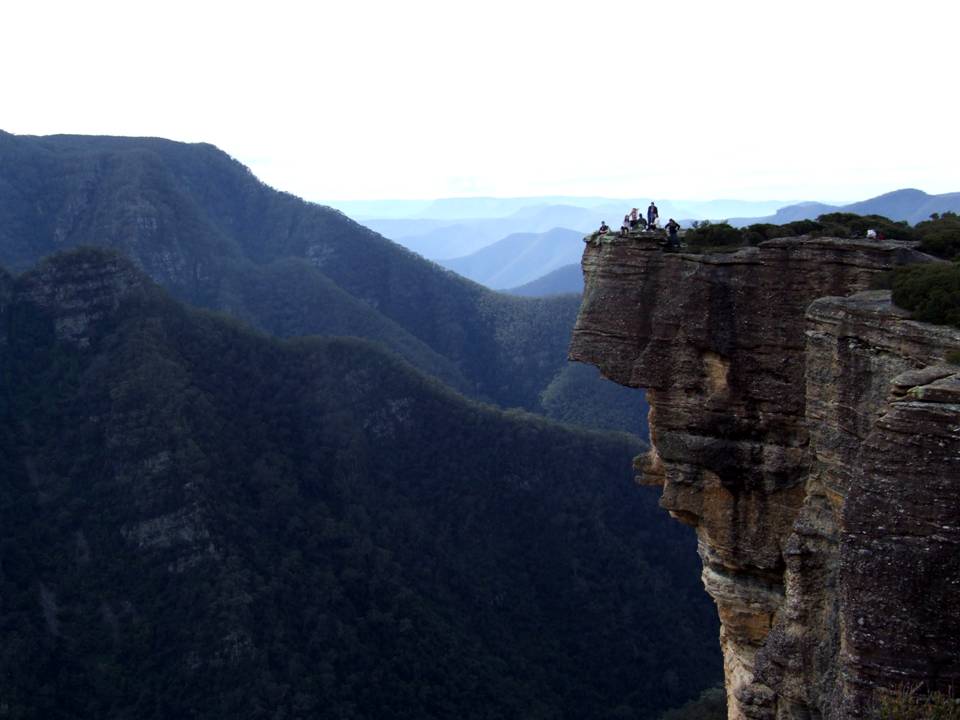
Figure 2: Kanangra Walls. View towards East. Folded Devonian and older beds appear behind and below the horizontal sandstones of the Sydney Basin (right foreground)

Figure 3: from Elizabeth M. Basnet and Margaret J.Colditz(1945): “General Geology of the Wellington District, N.S.W.” Plate 3(Wellington Caves are located to the North of the lower section, approximate location highlighted in yellow.)
Within the Cave Space we have a far more intimate view. The limestones at Dip Cave, Wee Jasper and Mammoth Cave Jenolan exemplify steeply dipping inter-bedded sedimentary rock. Observations are that the cave direction follows the strike of these steeply dipping beds.
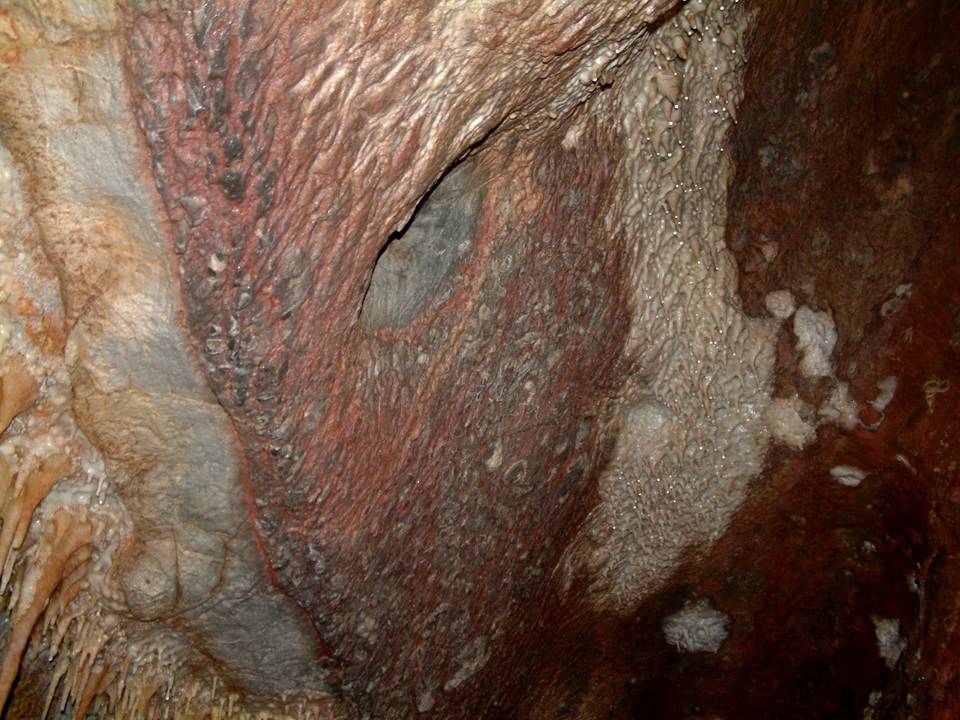
Figure 4: Steeply dipping beds, Dip Cave.
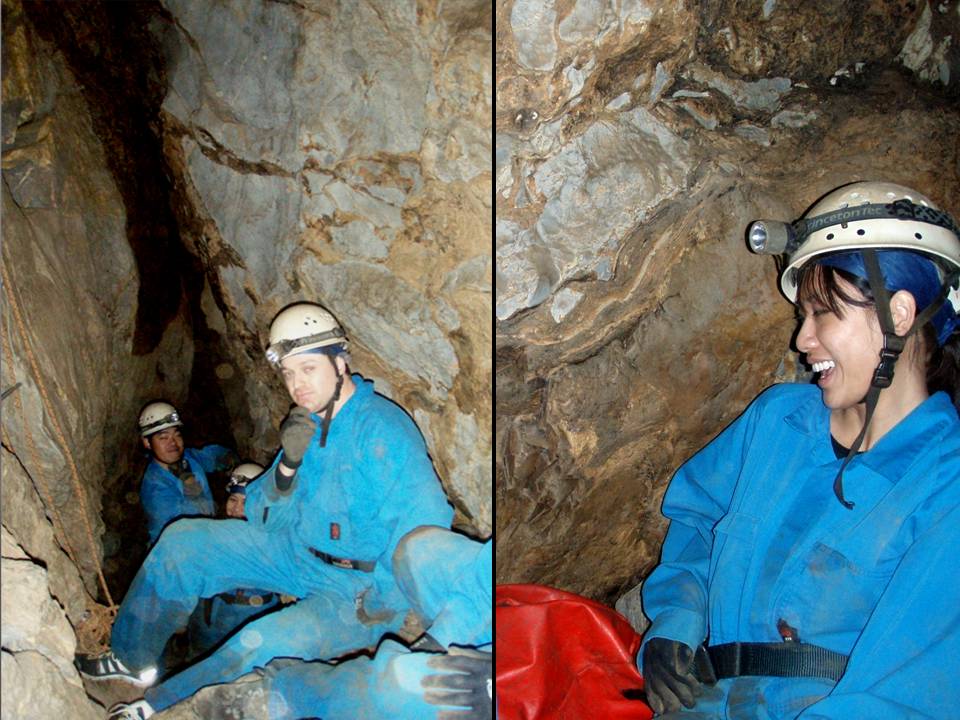
Figure 5: Steeply dipping beds, Mammoth Cave
Implications
Comparative notice should be taken of the more erratically formed caverns developed within limestones at less structurally controlled sites. A natural consequence of horizontal beds (which, by definition, have no strike) is that the caves are somewhat less directed. Their more random development is regulated by other structures such as jointing and indeed by any other appropriate cause.
The point to be emphasised here is that –‘following of strike’ – factors in “the involvement of the inter-bedded material.” Such material has been, or is being, removed over time.
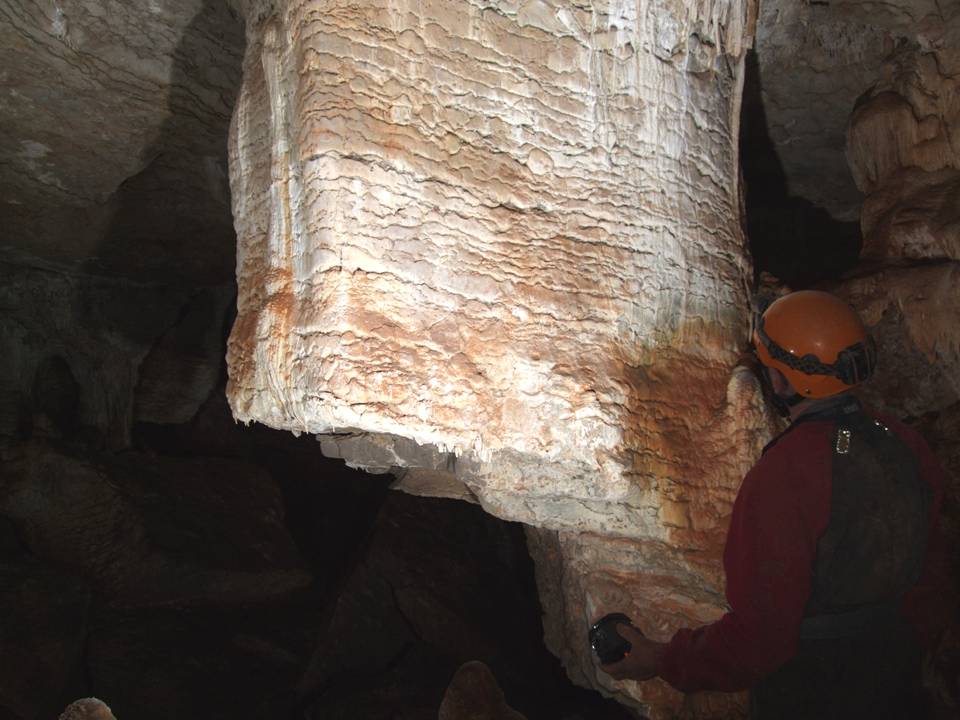
Figure 6: Two photographs taken of the same cavern showing cavities formed erratically in a less structurally controlled site (Buchan region Vic).
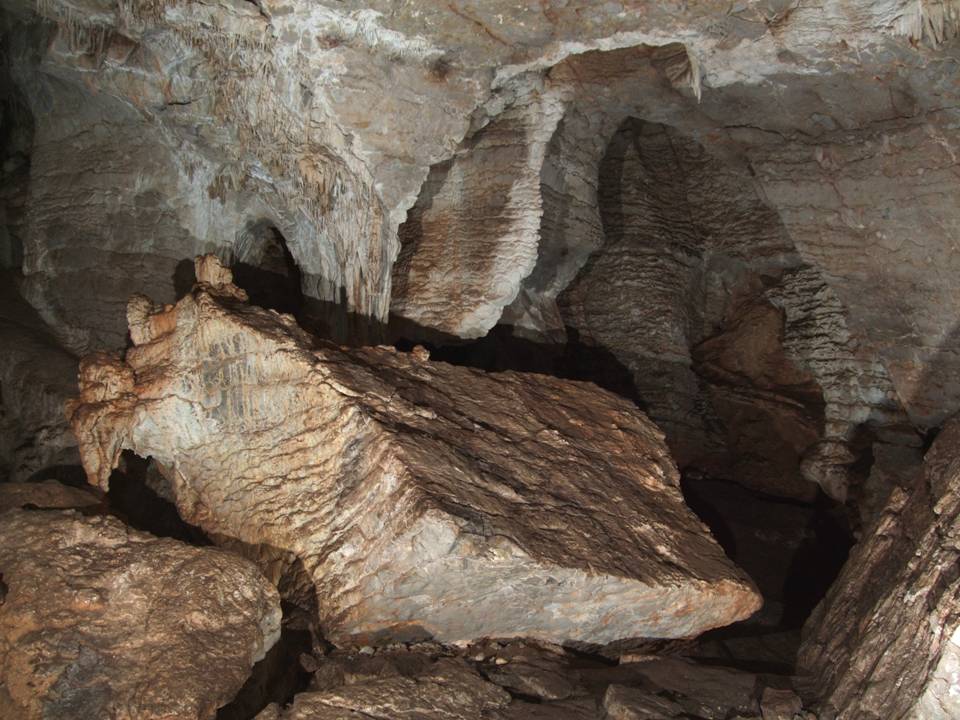
Figure 7
The caverns of Dip Cave, Wee Jasper NSW, mapped (1955-57) by Jennings et al. evoked the following comment…
“The clarity, with which the morphology of the cave reflects the geological structure, is almost counterbalanced by the obscurity which hinders any effort to interpret the origin and evolution of the cave.”
Joe Jennings (1963)
Here we detect Joe Jennings’ frustration at being unable to describe the mechanism for a cave such as ‘The Dip’ to have formed and developed over time. Essentially he is concerned that erosional waters seem to lack both an entrance to and an exit from the cave, as the geomorphology of the immediate area shows little if any relationship to this Cave forming inside the limestone.
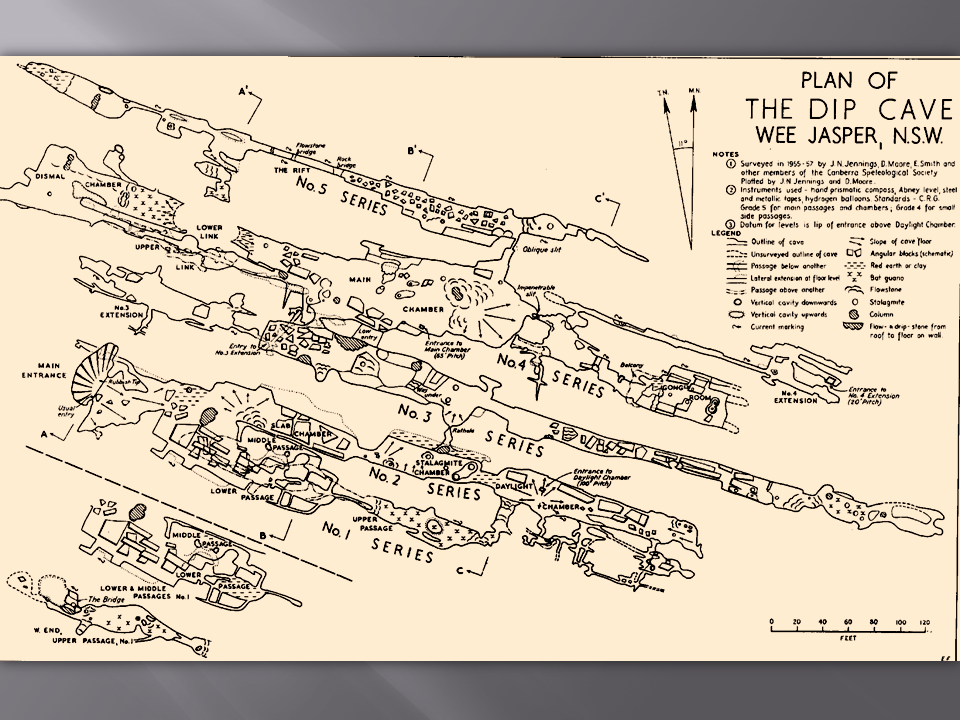
Figure 8: Dip Cave exemplifies a set of caverns following strike. (From the surveyed ‘Plan of the Dip Cave’ Jennings et al 1955-57. Jennings, 1963)
“An Isometric Diagram” of Mammoth Cave Jenolan by E.G. Anderson in 1971 (Figure 9) is worthy of comment also. The significance of its effective portrayal isometrically, and yet with relative accuracy seems to have gone almost unnoticed. Armstrong Osborne in his “Halls and Narrows” paper (2001) refers to this kind of observation, perhaps without clearly highlighting or concluding a general case, which may be that…
‘The clay/silt-(stones)may occur unevenly and often form lenses…Connecting passages transverse to strike are less well developed’… TM
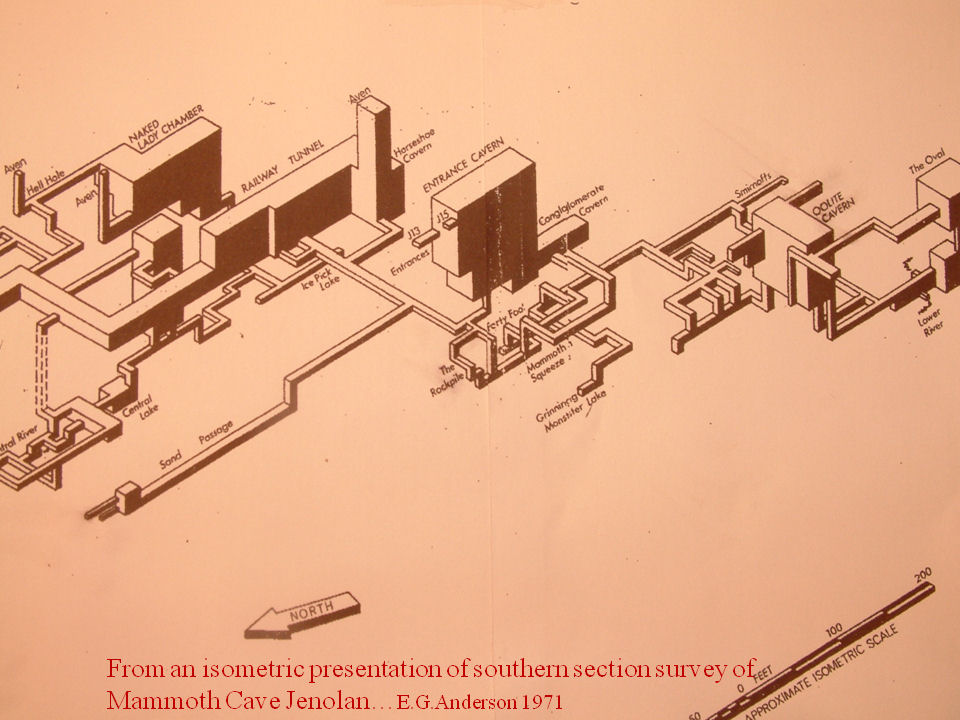
Figure 9: “An Isometric Diagram” of Mammoth Cave (Anderson, 1971)
Additionally, strike of the bedding in Mammoth Cave Jenolan is close to NNW. Remarkably, the overall trend of the Mammoth Cave clearly follows that direction…Why does this need to be so?...And why is it that so many plan maps of our Eastern Australian caves can be fitted so conveniently into a vertical format, with North to the top of the page?
Back to Basics
Generally Speaking;
- Caves in limestones form by the… ‘weathering’ and erosion of rock.
- For the most part, and over considerable time, the less resistant materials in the rock, are being, or have been removed.
- The development of drainage allows a progressive lowering of the water table and the cave space previously submerged becomes filled with air.
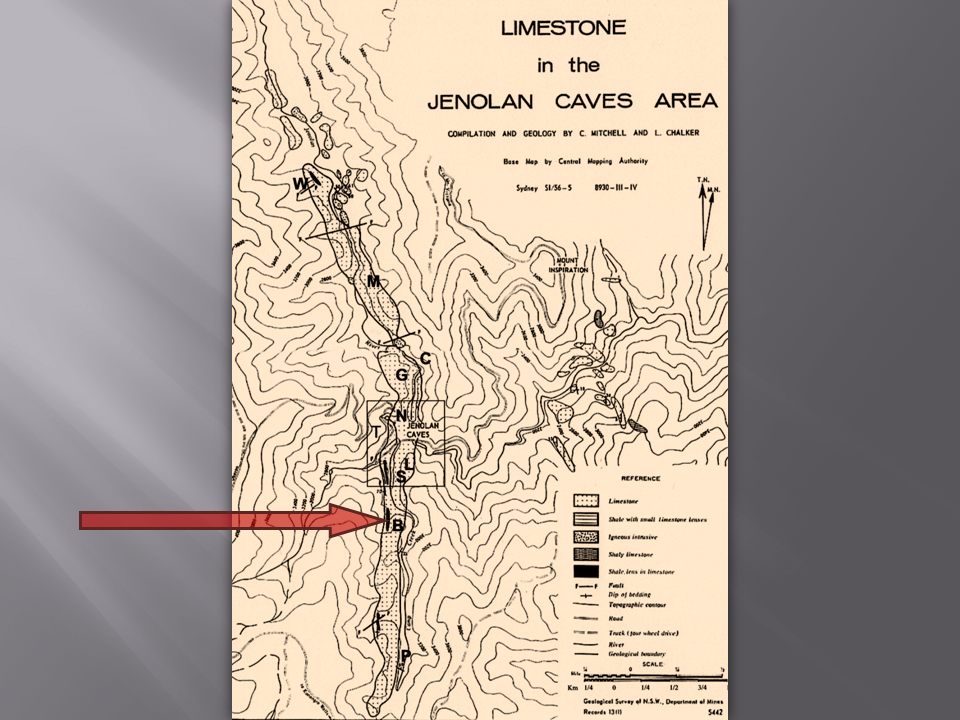
Figure 10: Leonie Chalker’s map of Jenolan (Chalker, 1970, Lishmund et al., 1986)
Lenses of Clay
Leonie Chalker’s shale lenses remain unrecognised in any published discussions on Limestone Cave formation. Chalker’s work from which her map including its reference here to “Shale lenses” has been used in many publications since, including the Geological Survey by NSW Department of Mines, later Mineral Resources. Leonie’s access to the Jenolan Cave Limestone was limited to rock exposed at the surface. She had less than reasonable access to rock exposures within the Caves. (Ron Newbould. pers. comm.)
Today remnants of “shale lenses” survive; their being exposed in walls and ceilings within the Jenolan Caves.
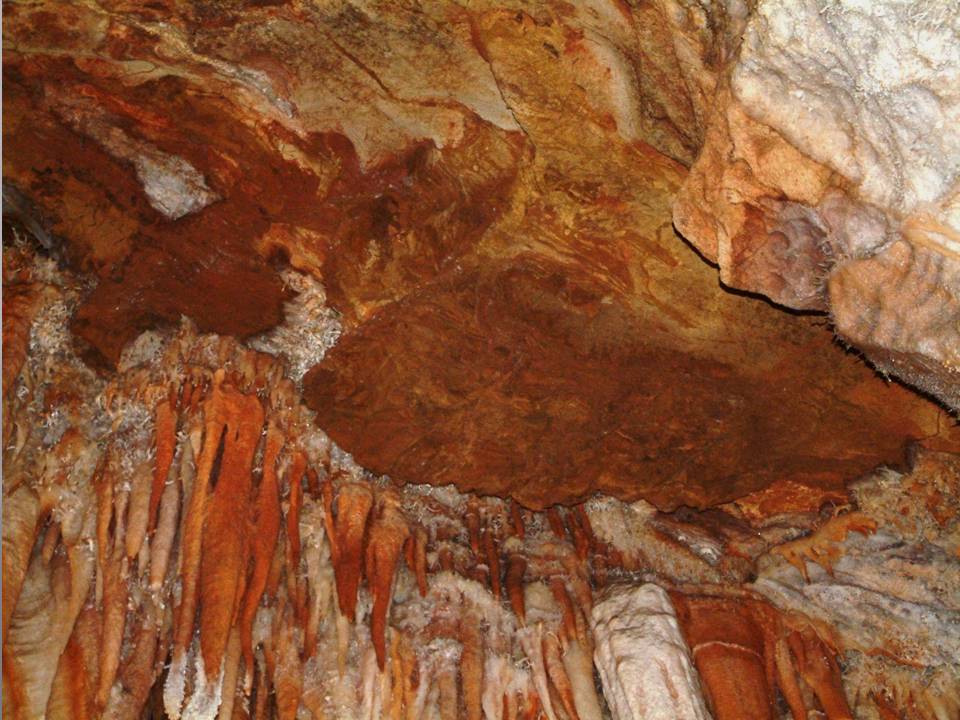
Figure 11: Shale lens bedded within ceiling of Indian Chamber, Orient Cave Jenolan
Based on the Jenolan scene, (which may illustrate a common Eastern Australian structure) a cartoon shows overturned limestone beds. In the diagram the ‘under’-(or older)-side appears to be on top and to dip down to the west at say ‘70’ degrees to the horizontal. Entombed clay lenses are represented by the ochre colour. These are structurally related to the claystone/clay inter-beds, expressing a similar strike and dip. The photograph to the left of the diagram shows an actual set of such overturned limestone beds with an inter-bedded remnant of a red claystone. (Both photographs are taken directly in front of the Guides’ Office, Jenolan and presented here as Figure 12)
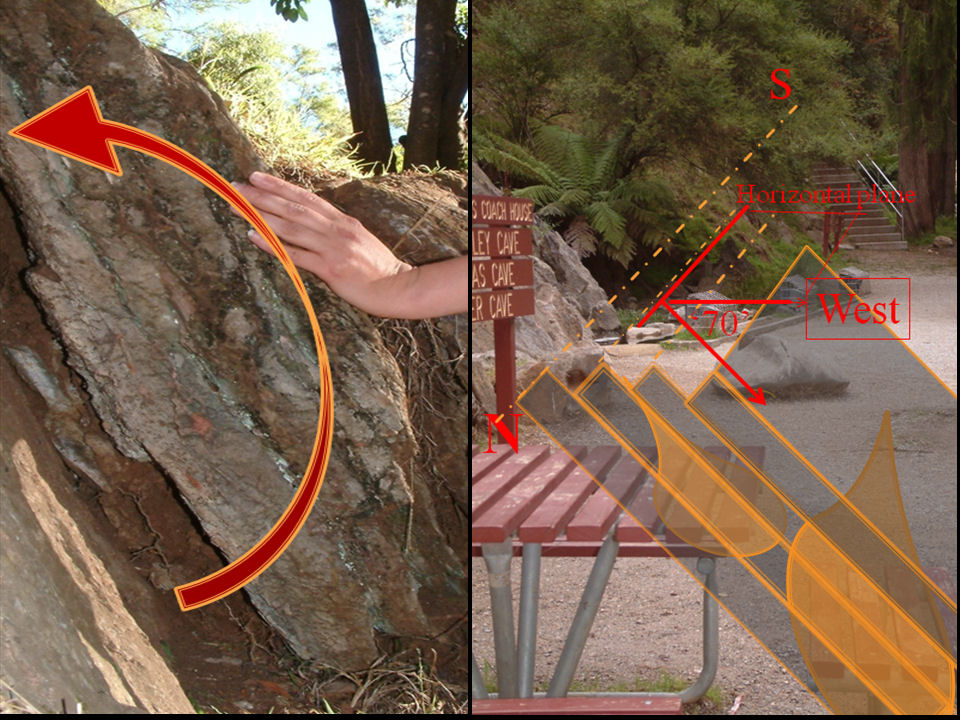
Figure 12: Composite representation and photograph of overturned beds Jenolan
This Illustrates the Concept that;
- Caves within many Eastern Australian limestones, including Jenolan are aligned parallel to the strike of the folded strata (connecting passages transverse to strike are the less well developed.)
- The impervious limestone beds are commonly separated by porous interbeds of clay and silt.
- These “clays” occur unevenly and often as in lenses.
Three ‘areas of cave geology’ where questions could be better answered.
- Age of the Sediment
- Textural Change
- Brecciation: Cave vs Reef
Age of the Sediment
It was argued by Osborne et al. (2006), that Jenolan Caves were around 340 million years old. Initially eight primary samples of illite-rich clay cave sediment were separated into individual size fractions and dated using radio-active K-Ar techniques. Ages varied from a possible 400 Ma. to a possible 250 Ma. The coarse fraction of each sample tended to provide the oldest dates.
This data provides an extremely old age for the cave sediments. However, it is possible that the sediments represent material laid down with the ancient reef debris.
At the locations from which ‘O1’, ‘J174’ and ‘JRV9’ samples were removed for dating it is notable that the outcrops sampled may be associated with near-vertically bedded sediments.
It would seem that for some of us there remains;
- A difficulty in recognising bedding planes in these limestones
- A failure to recognise the presence of key fossils;
- An ignorance relating to the formation of clays and of dolomite.
The images to be discussed are examples of ancient sedimentary sandy beds which partially line vertical walls of the ‘Colosseum’, (Spider Cave) and of the ‘Jungle’, (Orient Cave), Jenolan. Bedding in both walls and ceilings of these caverns is near-vertical…
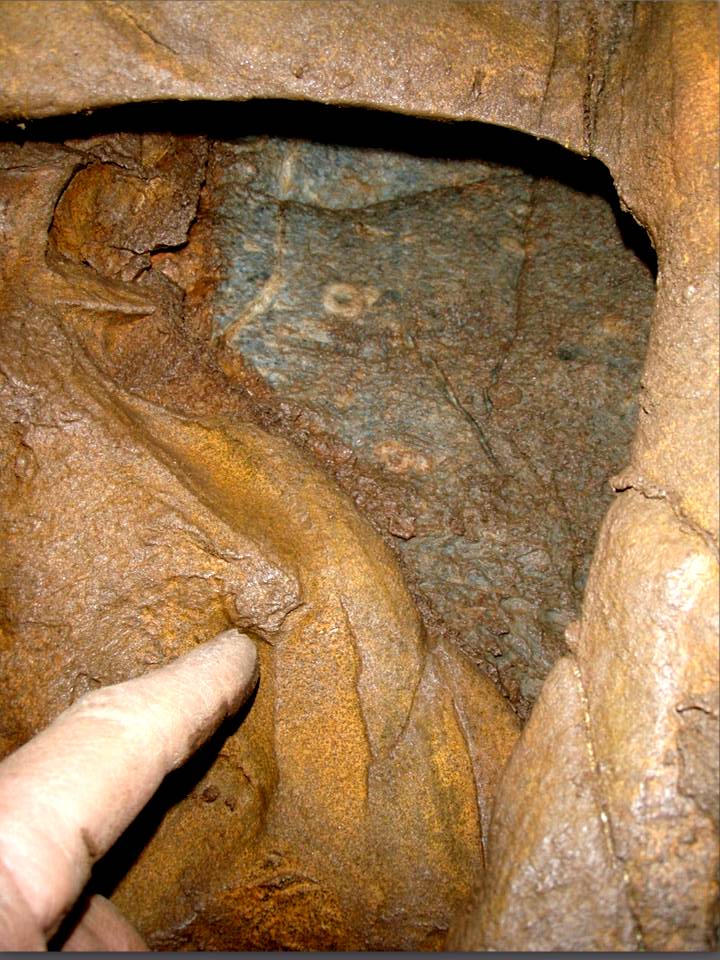
Figure 13: ‘Vertical’ cross-bedded sandstone, Spider Cave.
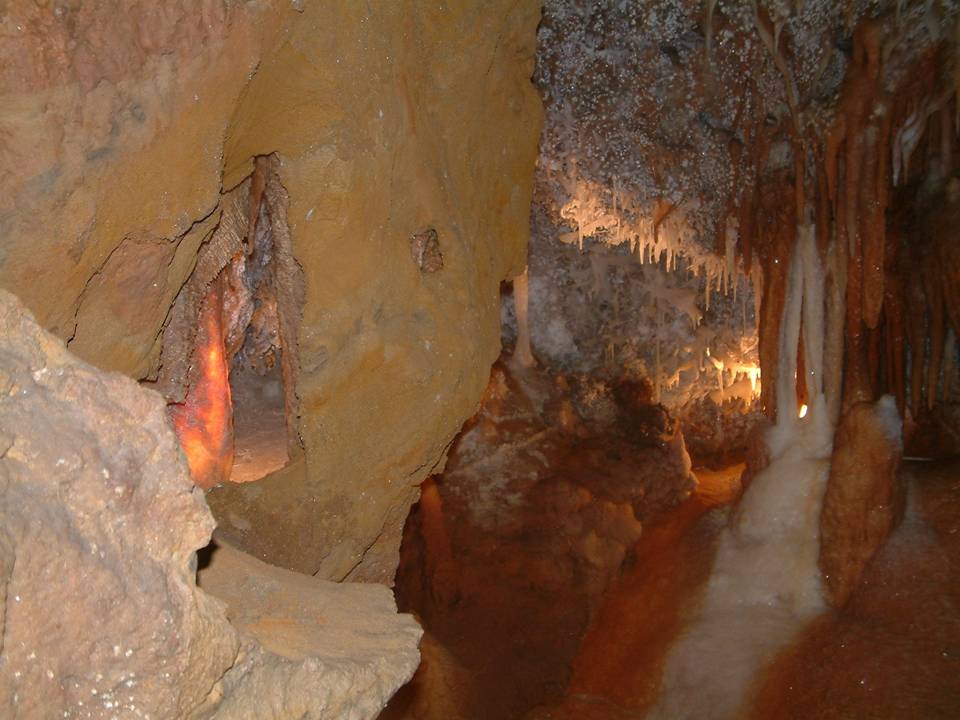
Figure 14: ‘Vertical’ sandy bedding of ‘The Jungle’, Orient Cave.
Any sedimentary layers so rotated from near horizontal attitude would be described by most as having an age older than that of the folding of the region (say >350 Ma.). Whenever fossils are located within the sedimentary rock, a most reliable age may be assumed.
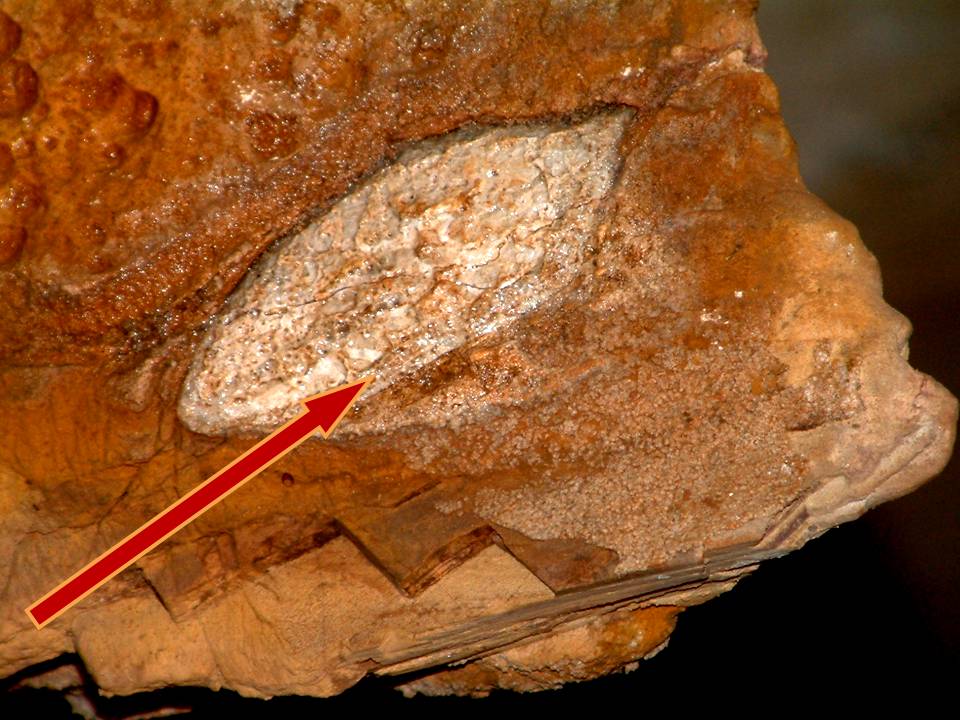
Figure 15: Silurian brachiopod in claystone, River Cave Jenolan.
In another sample (Figure 16) the material surrounding the corals is dolomite. A commonly held theory suggests that calcite may change to dolomite due to a process called ‘dolomitisation’.
Dolomite differs from calcite in that: magnesium carbonate substitutes for up to a 50% proportion of and spreads evenly throughout, the original calcium carbonate crystal lattice.
There is no known simple chemical process which would change calcite to dolomite at or around ‘room temperature’ (Chemists refer to this as ‘The dolomite problem’).
J.C. Deelman gives evidence that so called ‘dolomitisation’ needs not to occur at all. (1999) (2003) (2011) and (2008 unpubl.) The change to dolomite is slow and irreversible; dolomite does form, for example at reefs in lagoons, under specific and repeated natural conditions; essentially involving fluctuations in pH value. Clays may form by similar irreversible geochemical reactions.
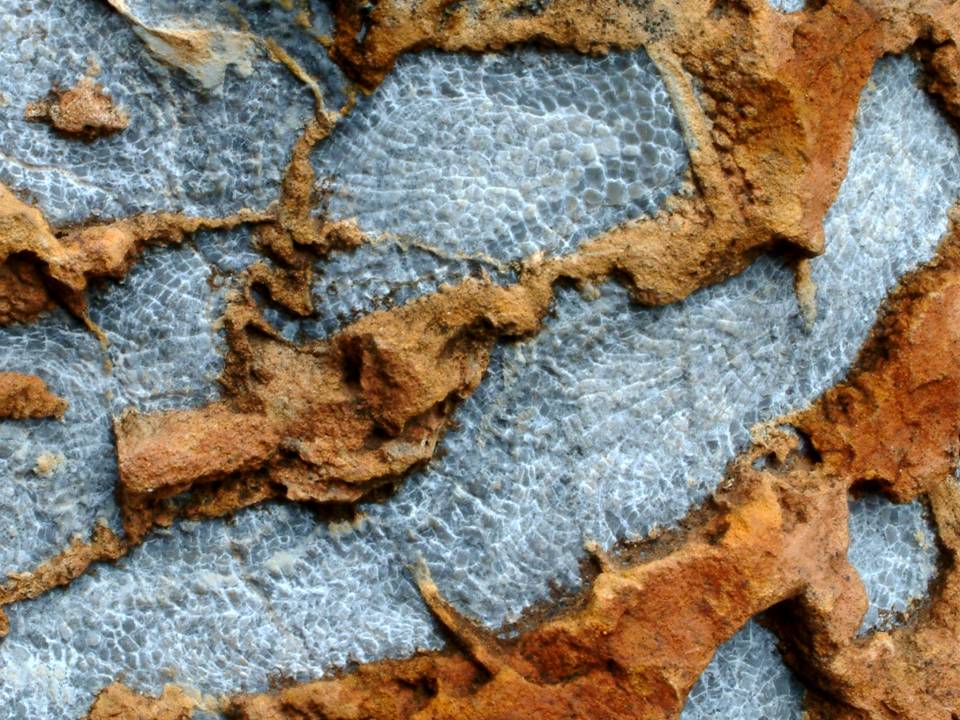
Figure 16: Iron-rich dolomite imprinted by and engulfing corals of Silurian age.
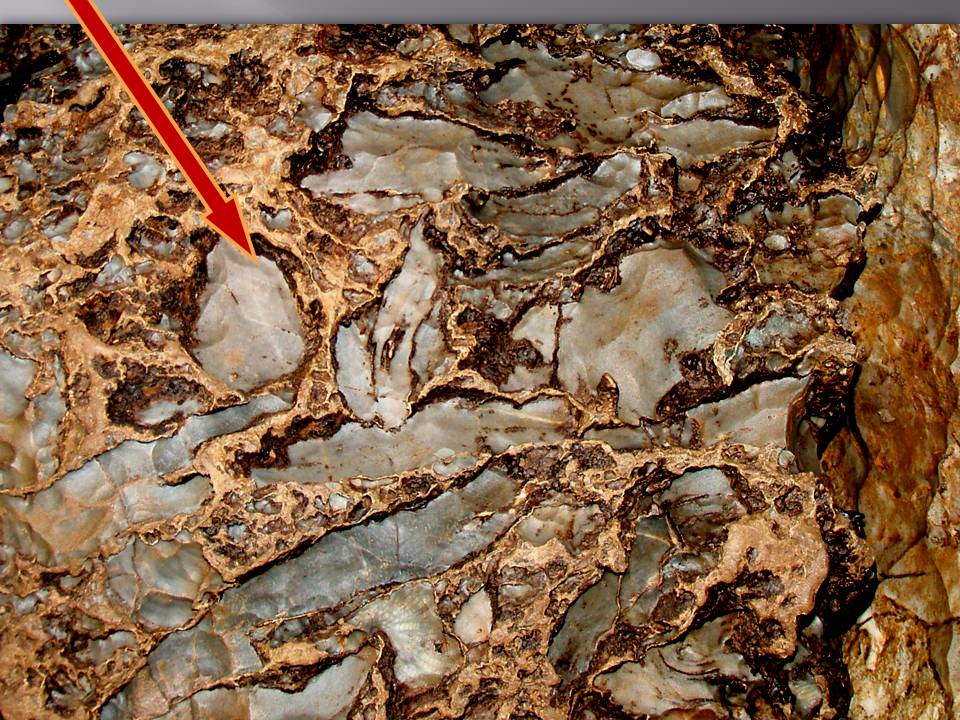
Figure 17: Notice the chemical attack at boundaries of fossil components of the rock. Compare with Figure 15.
The chemistry occurring at the contact between inter-bedded materials needs special investigation. Whatever the reaction is here at the fossil boundaries results in the dissolving of limestone. The acid reactant is presently unrecognised.
‘Elk River streamway’ photographs (Figures 18-19) are text-book typical of inter-bedded Eastern Australian folded limestone textures…fossils shown are of earliest Devonian age, attached to the limestone bed now above them. The clay inter-bed in which they were once enclosed is all but removed by erosion, leaving the fossils exposed at the roof of this cave.
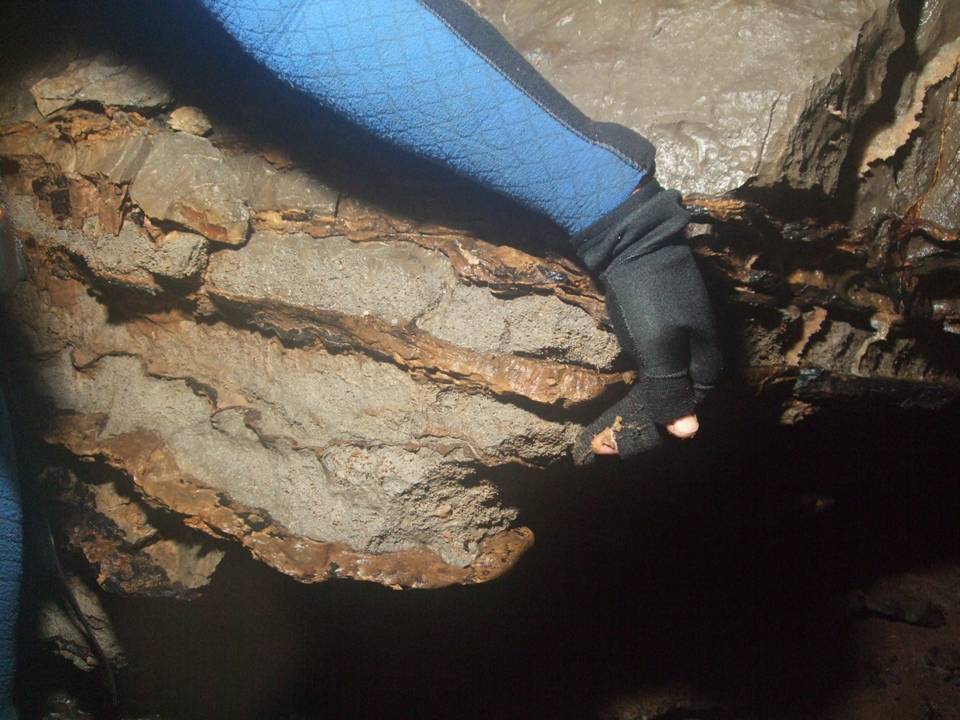
Figure 18: Clay inter-beds at ‘Elk River streamway’ Buchan
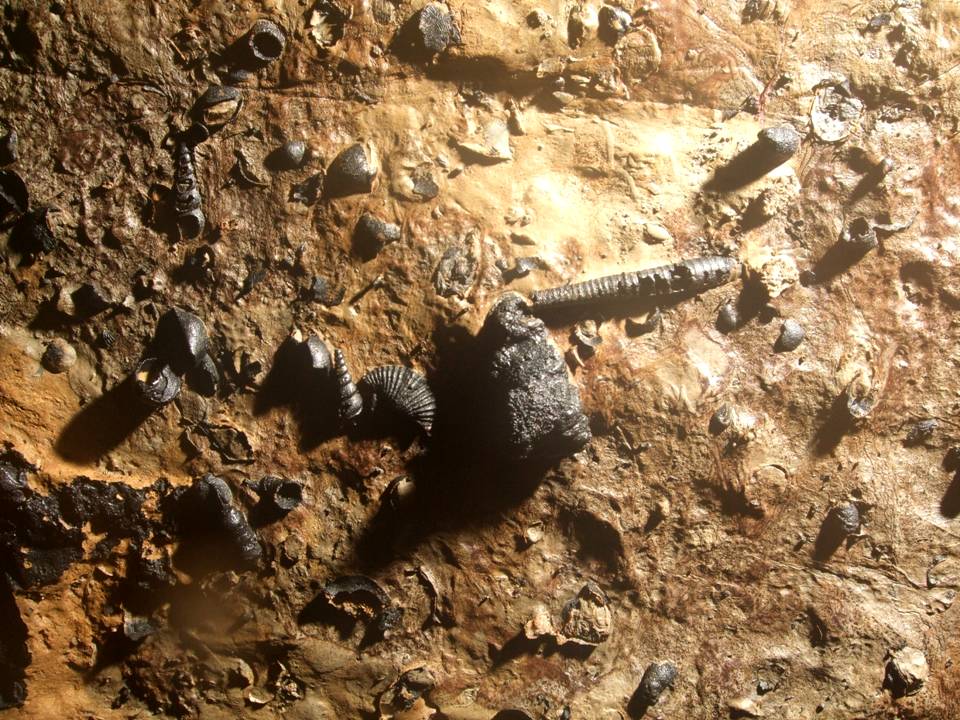
Figure 19: Early Devonian fossils exposed by natural erosion of clays.
The debris of clay and much coarser sediments e.g. cobbles, so removed, may regularly remain in the cave; not necessarily far from their original location within the limestone sequence. Any fair observer should not fail to recognise the common occurrence of clays in the floors, walls and ceilings.
Cobbles are common; even boulders which may be rounded to sub-rounded. In many Caves such as Temple of Baal, Mammoth and Jubilee (Jenolan), cobbles regularly remain unsorted from the clay fraction of the sediment forming floor and indeed many walls to the cave spaces.
The observation of similar stones outside the cave is rare and when such is the case, may often be reasonably explained as being remnant debris from a long-since collapsed cave of ages past.
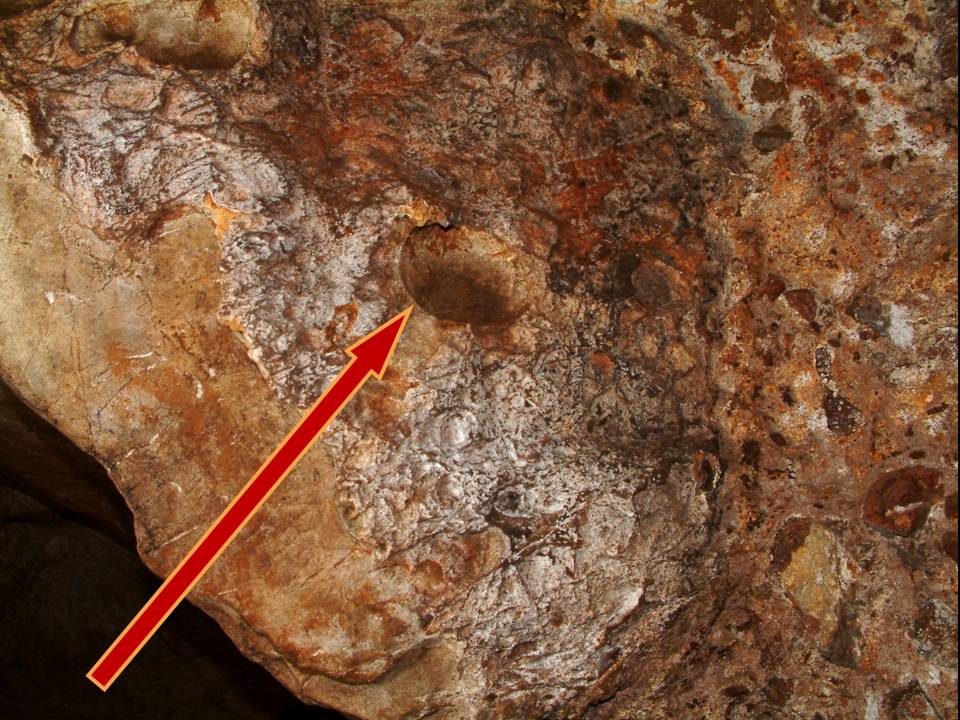
Figure 20: The scar left by a cobble now fallen off the cave wall. Note the preserved indentation in the limestone substrate indicating that the cobble has been part of the reef forming debris. (Buchan. Vic)
Textural Change
- Theories with reference to periods of palaeokarst are regularly suggested to account for the infilling of cavities with such ancient deposits as illustrated.
- The resulting effect is that the ancient textures may not be viewed as critically as is necessary.
Photographs of Diamond Cave’s walls and ceiling (Figures 21-22), show macro-crystalline texture which displays a particular symmetry. This may be the metamorphic response to a prolonged heating and of pressure applied to certain original sediments and rock. The new texture preserves no fossils and is presently porous. Porosity is made evident by growth of helictites and other speleothems.
Similar texture has been interpreted by some (Osborne, 1999) as representing an in-filling by crystal ‘palaeokarst.’
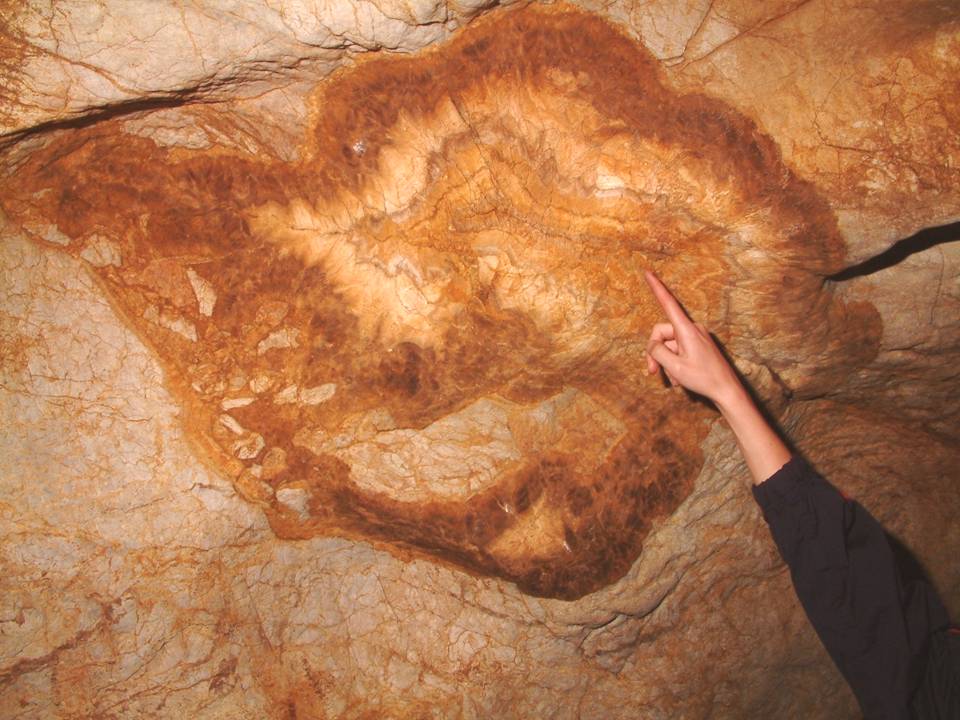
Figure 21
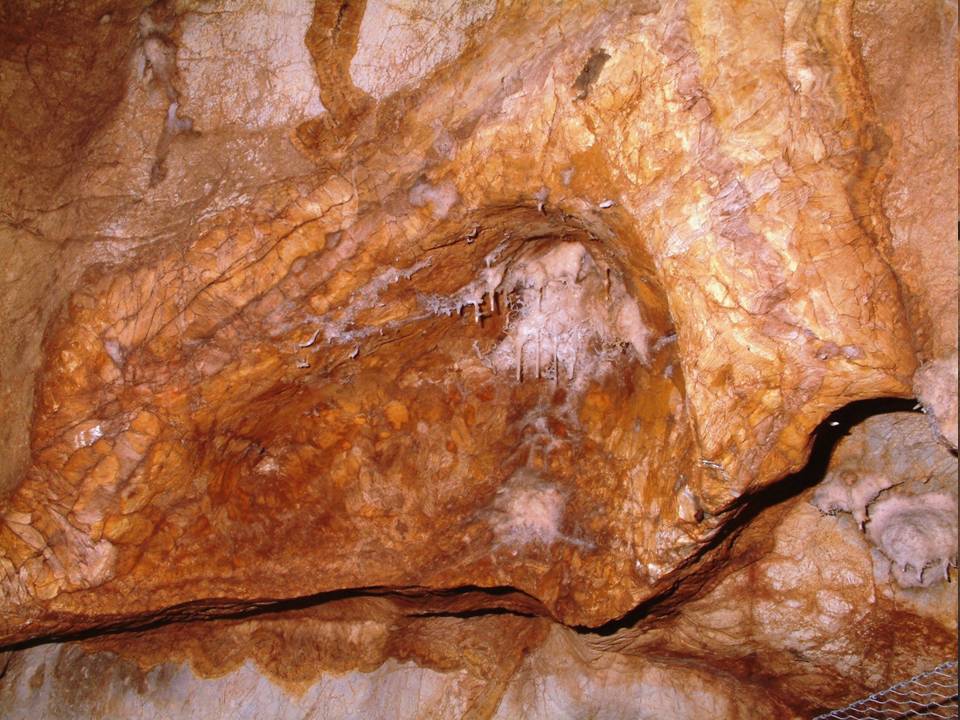
Figure 22
Other references to palaeokarstic character (Osborne, 1999, 2007) relate to textures, which alternately, may be quite original.
The geology of folded or overfolded limestones may enclose somewhat foreign sedimentary material. We can recognise the enclosure by the attitude of the foreigner. For example, should the foreign body be overturned along with the fossil beds, we can assume that the foreigner had been in place prior to the folding.
Applying this argument to the foreign sediments shown in Figure 23:- Is the sediment perhaps overturned within the enclosing framework of a slightly earlier sedimentary structure?...or more simply…Which way is up?

Figure 23: Which way is up?
Brecciation: Cave Vs Reef
- Sedimentary process and mechanism affecting the reefs as they form requires further study
- The reasoned view that many textures in cave walls may tell a part history of an ancient coral reef cannot be dismissed
Figure 24 shows a wall/ceiling of Katie’s Bower, Chifley Cave Jenolan. Brecciation has occurred on at least two separate occasions. Once before, and again after sediment has become bedded and lithified. The beds are torn apart and displaced slightly; with the larger brecciated debris falling away and rotated yet held suspended in the iron-rich ‘clays’.
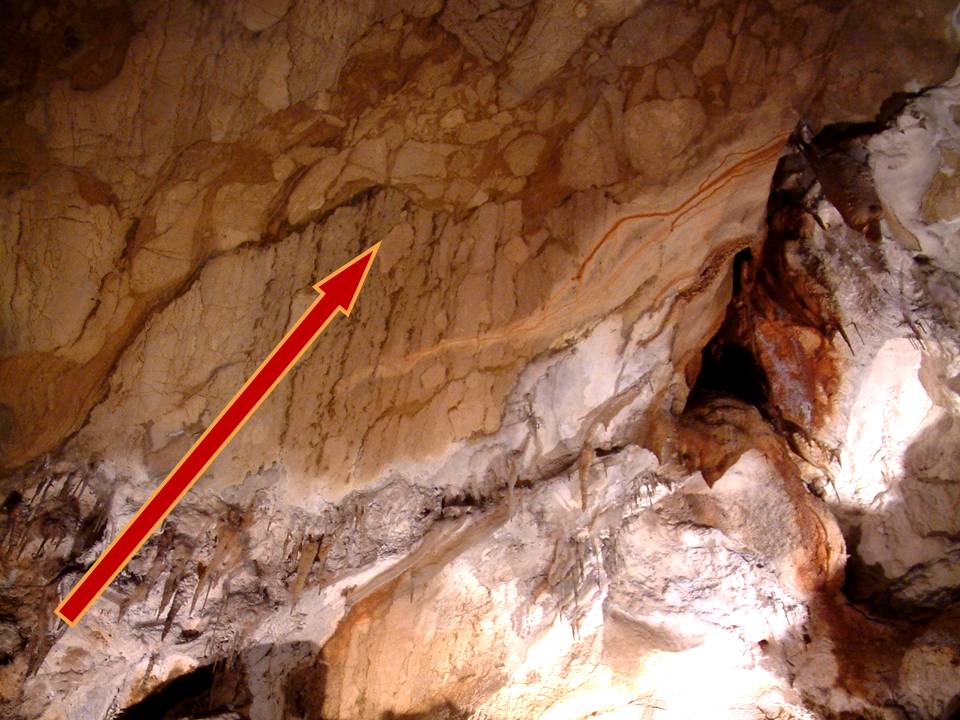
Figure 24: A story from the reef
Conclusion
Explanation as to why any cavern is specifically located within its envelope of resistant limestone may involve further and comparative observations in reference to:
- Geological structure such as folding and textural change of sedimentary rock beds of the Limestone Unit in question (e.g. ‘Jenolan Cave Limestone’).
- The chemical nature and shape of inter-bedded materials
- The enclosure and array of anomalous sediments housed within the caves
Over the past 30 years a great deal of work has been put towards drawing perhaps biased yet popular conclusions from scant observation.
Serious, logical reason brings us to a conclusion that much, if not most of the sediment within these caves is autochthonous and that the cave boundaries often represent eroded casings of previously inter-bedded clay lenses of similar age to that of recognised fossil reef material.
References
Anderson, E.G. (1971) An Isometric Diagram. Speleological Research Council Ltd. and Sydney University Speleological Society.
Basnet, Elizabeth M. and Colditz Margaret J.(1945). General Geology of the Wellington District, N.S.W. Jnl. Proc. Royal Soc. NSW Apr.1945, Plate 3.
Chalker, Leonie. (1970). Limestone in the Jenolan Caves Area. Records of the Geological Survey of New South Wales, Vol 13, 1971.
Deelman, J. C.(1999). Low-temperature nucleation of magnesite and dolomite .- N. Jb. Miner. Mh.,1999 (Studies on irreversible geochemical reactions No.7). pp 289-302 , Stuttgart.
Deelman, J.C. (2003). Note on magnesite formation(Studies on irreversible geochemical reactions Nº 9). Carnets de Géologie / Notebooks on Geology - Article 2003/01 (CG2003_A01_JCR-FE).
Deelman, J.C. (2011). Low-temperature formation of Dolomite and Magnesite. http://www.jcdeelman.demon.nl/dolomite/bookprospectus.html
Deelman J.C. (2008). Low-temperature nucleation of kaolinite. Eindhoven.(unpubl).
Jennings J.N. (1963). Geomorphology of Dip Cave, Wee Jasper, New South Wales. Helictite 1, 43-58.
Lishmund, S,R., Dawood, A.D. and Langley, W.V. (1986). The Limestone Deposits of New South Wales. Mineral Resources 25 (2nd Ed.). p20
Osborne R.A.L. (1999). The origin of Jenolan Caves: Elements of a new synthesis and framework chronology. Proc.Linn.Soc.N.S.W. 121 pp 1-27
Osborne R. Armstrong L. (2001). Halls and Narrows: Network caves in dipping limestone, examples from eastern Australia. Re-published by permission from Cave & Karst Science 28 (1). 2001.pp 3-14
Osborne R. A. L , Zwingmann L. H , Pogson R. E. and Colchester D. M.( 2006). Carboniferous clay deposits from Jenolan Caves, New South Wales: implications for timing of speleogenesis and regional geology. Australian Journal of Earth Sciences 53, (377 – 405)
Osborne R.A.L.(2007). The World’s Oldest Caves:-How did they survive and what can they tell us? Time in Karst. Postojna. pp 133-142
Rowling, Jill (2004) Cave Aragonites of New South Wales. Thesis submitted as part requirement for Master of Science degree, University of Sydney (unpubl.) p36